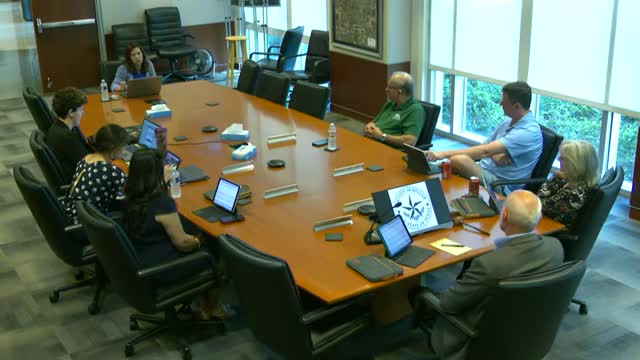Controversial subdivision easement sparks heated planning debate
August 28, 2024 | Keller, Tarrant County, Texas
This article was created by AI summarizing key points discussed. AI makes mistakes, so for full details and context, please refer to the video of the full meeting. Please report any errors so we can fix them. Report an error »

In a recent government meeting, discussions centered around a minor subdivision plat that had been administratively approved in May, which included a private access easement and a hammerhead turnaround for fire safety. The plat, which subdivides a single lot into two, was designed to ensure that emergency vehicles could access both properties safely.
However, the applicant has since requested a variance to eliminate the required hammerhead and access easement, preferring to leave the road as a dead end. This request has raised concerns among city officials regarding potential implications for future development, particularly for the second lot, which could become landlocked without proper access.
City staff emphasized that the original plat approval included safety measures mandated by the Unified Development Code (UDC) and the fire department. The hammerhead design is an acceptable alternative to a cul-de-sac, which is typically required for dead-end streets. The applicant's desire to bypass these requirements could complicate future construction plans, especially if the second lot is sold to a new owner unaware of the access issues.
The meeting highlighted the importance of clear communication regarding property development regulations, as future buyers may not fully understand the implications of easements and access requirements. City officials noted that while the applicant currently has no plans to develop the second lot, any future construction would necessitate compliance with the established safety standards.
As the matter progresses, the Planning and Zoning Commission will review the variance request, which will subsequently be presented to the city council for final approval. The outcome could significantly affect the development potential of the second lot and the overall safety of the subdivision.
However, the applicant has since requested a variance to eliminate the required hammerhead and access easement, preferring to leave the road as a dead end. This request has raised concerns among city officials regarding potential implications for future development, particularly for the second lot, which could become landlocked without proper access.
City staff emphasized that the original plat approval included safety measures mandated by the Unified Development Code (UDC) and the fire department. The hammerhead design is an acceptable alternative to a cul-de-sac, which is typically required for dead-end streets. The applicant's desire to bypass these requirements could complicate future construction plans, especially if the second lot is sold to a new owner unaware of the access issues.
The meeting highlighted the importance of clear communication regarding property development regulations, as future buyers may not fully understand the implications of easements and access requirements. City officials noted that while the applicant currently has no plans to develop the second lot, any future construction would necessitate compliance with the established safety standards.
As the matter progresses, the Planning and Zoning Commission will review the variance request, which will subsequently be presented to the city council for final approval. The outcome could significantly affect the development potential of the second lot and the overall safety of the subdivision.
View full meeting
This article is based on a recent meeting—watch the full video and explore the complete transcript for deeper insights into the discussion.
View full meeting
